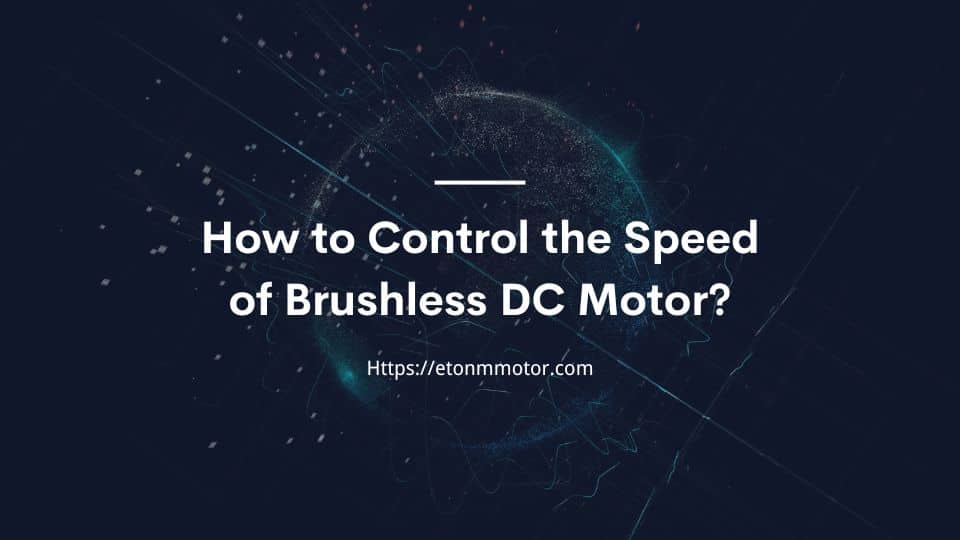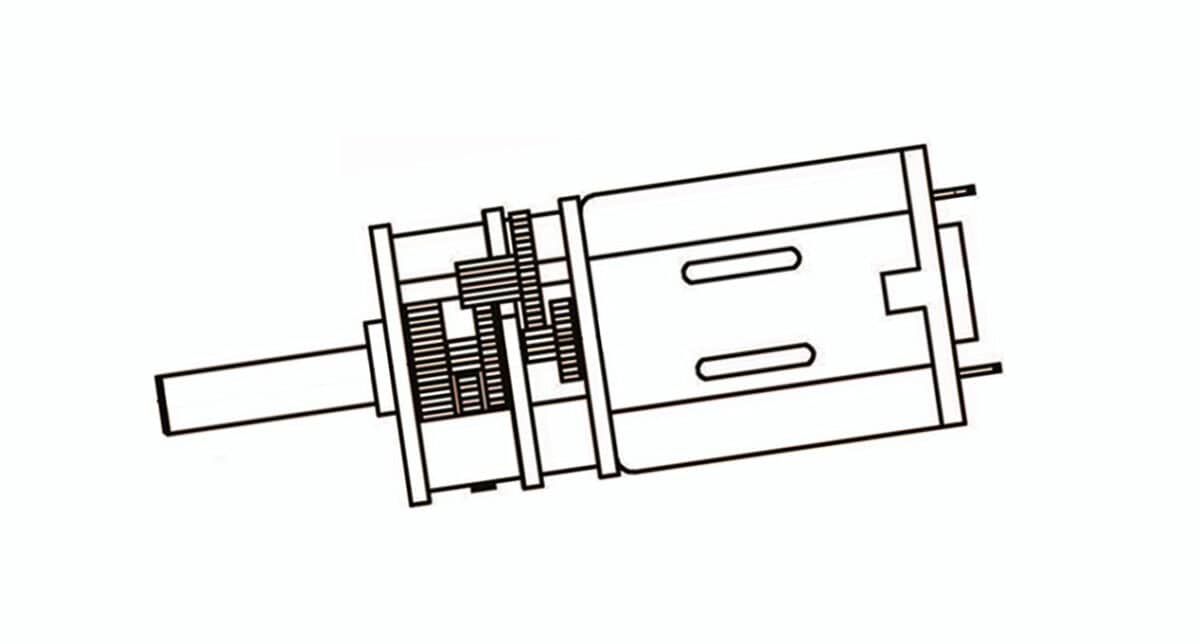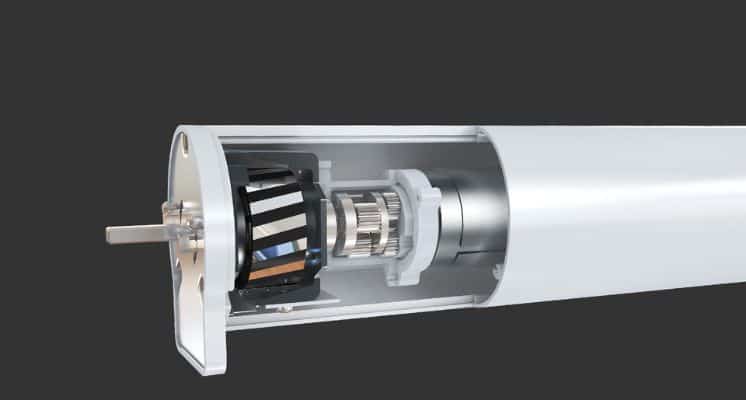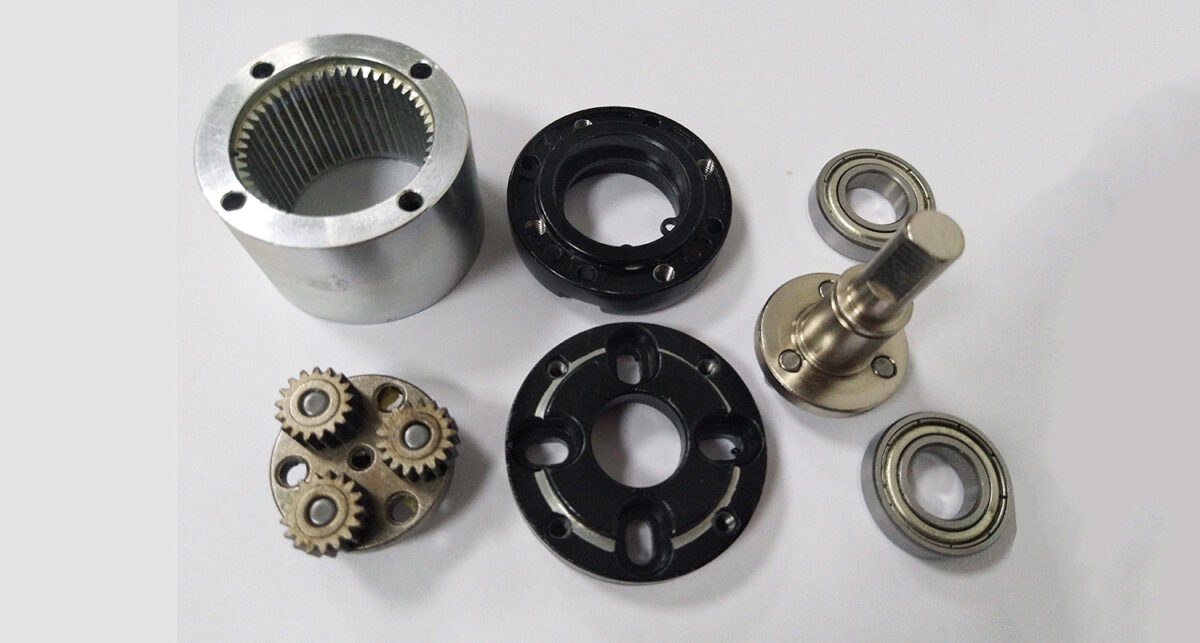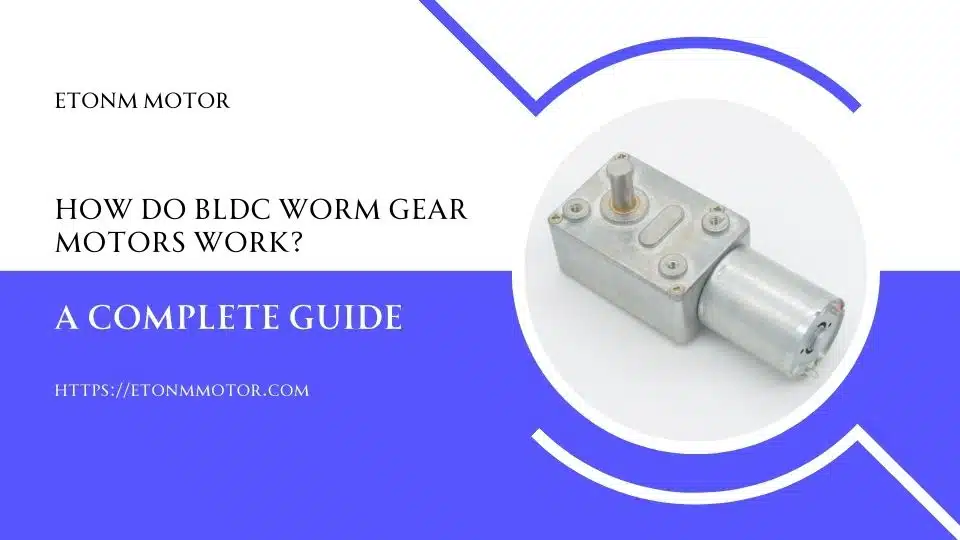Learn proven methods to control brushless DC motor speed, optimize performance, and extend lifespan. Discover industry-specific applications and practical tips.
Table of Contents
Introduction
“Imagine your robotic arm suddenly stutters during surgery, or your smart thermostat’s fan emits a high-pitched whine—both scenarios often trace back to poorly managed brushless DC motor speed. In industrial settings, inefficient motor control can waste up to 20% of energy.”
Brushless DC (BLDC) motors dominate precision-driven applications—from surgical robots requiring ±1% speed accuracy to smart home systems needing whisper-quiet operation. Their lack of brushes reduces wear and boosts efficiency (up to 90% energy conversion vs. brushed motors), but controlling their speed remains a technical hurdle. Whether you’re designing a medical ventilator or an automated factory line, mastering BLDC speed regulation ensures reliability, energy savings, and compliance with certifications like ISO 13485.
While BLDC motors outperform traditional counterparts, their speed control demands nuanced methods. A one-size-fits-all approach fails here:
- Sensorless drones need rapid PWM adjustments to handle turbulence.
- Sanitary dispensers require voltage stability to avoid jittery motion.
- Industrial valves demand PID tuning for load variations.
If you’re here wondering, “How do I balance precision, cost, and durability in BLDC speed control?”—this guide breaks down four proven techniques (PWM, voltage regulation, sensor feedback, and PID loops) with real-world examples from smart home tech to medical devices. You’ll also learn how thermal management and EMI shielding extend motor lifespan—critical for Etonm’s clients in robotics and electric valve industries.
Understanding BLDC Motor Basics
How BLDC Motors Work
Unlike traditional brushed motors that rely on physical contact between carbon brushes and a commutator, brushless DC (BLDC) motors use smart electronic controllers and Hall-effect sensors to manage power delivery. Imagine a ballet dancer – the stator (stationary copper coils) creates a rotating magnetic field that “pulls” the rotor (permanent magnets) in a precise, contactless motion. This design eliminates friction-induced wear, making BLDC motors 15-30% more energy-efficient than their brushed counterparts. Key components like Hall sensors act as the motor’s “eyes,” detecting rotor position 1,000+ times per second to optimize commutation timing – a critical feature for applications like robotic arms or MRI machines where jerky movements are unacceptable.
Learn More: How Does a Brushless DC Motor Work? A Complete Guide to BLDC Motors
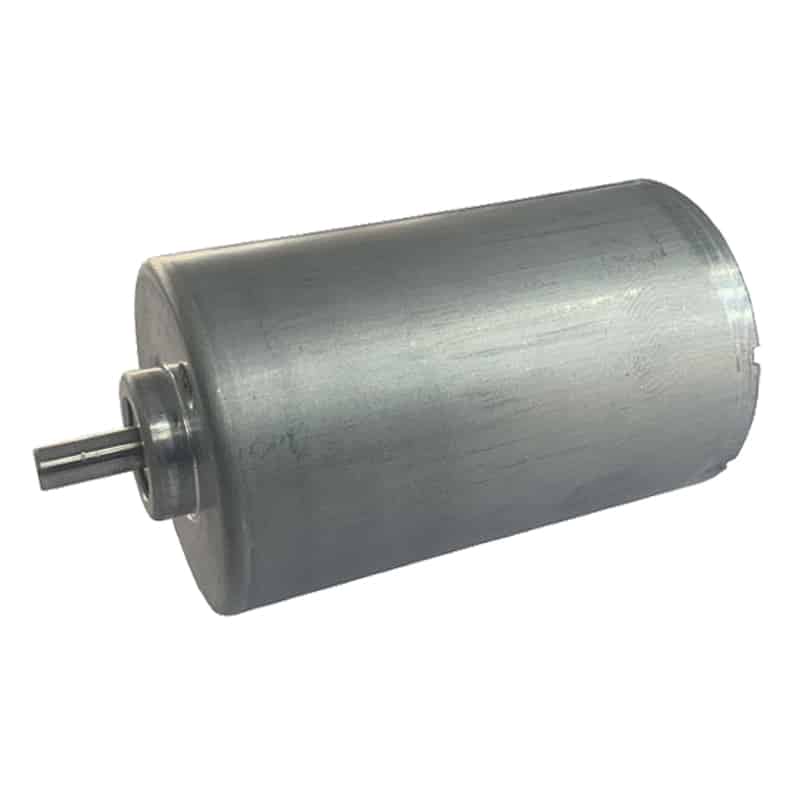
Why Speed Control Matters
Controlling BLDC motor speed isn’t just about hitting target RPMs – it’s about balancing energy efficiency, torque consistency, and operational lifespan. For example, a smart thermostat’s fan motor running at a fixed high speed wastes 40% of energy during low-demand periods. Proper speed regulation solves this by dynamically adjusting power input through techniques like PWM (Pulse Width Modulation). In medical infusion pumps, even a 2% speed deviation could deliver incorrect dosages, which is why advanced BLDC systems combine sensor feedback and PID algorithms to maintain ±0.5% accuracy. Etonm’s tests show optimized speed control extends motor lifespan by 3x in sanitation dispensers through reduced heat generation and mechanical stress.
Key Technical Insights
- Electronic Commutation: Replaces spark-prone brushes with semiconductor switches (MOSFET/IGBT) for smoother operation.
- Torque-Speed Relationship: BLDC motors maintain near-constant torque across 90% of their speed range, unlike brushed motors that lose 50% torque at low speeds.
- Sensorless Options: Modern controllers use back-EMF detection to eliminate Hall sensors in cost-sensitive applications like vending machine actuators.
Pro Tip: When selecting BLDC motors for security cameras, prioritize controllers with adaptive acceleration curves – sudden speed changes create vibration noise that triggers false motion alerts.
Top 4 Speed Control Techniques for Brushless DC Motors
Top 4 Speed Control Techniques
BLDC motors aren’t “set and forget” devices—their speed demands precision. Here’s how engineers and hobbyists tackle it, with real-world examples from robotics to medical tech.
H3: 1. PWM (Pulse Width Modulation)
Think of PWM like a DJ adjusting a track’s volume—by rapidly switching power on/off, it mimics variable voltage. A 60% duty cycle at 18kHz, for instance, keeps smart home fans whisper-quiet while maintaining torque. At Etonm, we use PWM-driven motors in vending machines to ensure smooth product dispensing without annoying hums 1.
Pro Tip: Avoid frequencies below 10kHz (human hearing range) or above 25kHz (risk of MOSFET overheating).
H3: 2. Voltage Regulation
Lower voltage = slower spin, right? Not so fast. While linear regulators (like LM317) are simple, they waste energy as heat. Switched-mode supplies (e.g., buck converters) are 90%+ efficient—critical for battery-powered robotics. But never drop voltage below 50% of the motor’s rating. We learned this the hard way: a sanitizer dispenser motor stalled mid-spray due to cogging at 4.5V (rated 12V).
H3: 3. Sensor Feedback Systems
Hall-effect sensors act as the motor’s “eyes,” sending real-time rotor position data. For surgical robots needing ±1% speed accuracy, this is non-negotiable. But sensorless control? It’s cheaper (no Hall sensors) and ideal for dusty environments like industrial conveyors. Trade-off: It struggles below 100 RPM. Check out Etonm’s BLDC customization guide for sensor-sensorless hybrid designs.
H3: 4. Closed-Loop PID Control
PID is the Goldilocks of control—balancing Proportional (response speed), Integral (error correction), and Derivative (overshoot prevention) gains. Tuning it for an electric valve? Prioritize stability with low P values. For a security camera’s pan-tilt motor? Boost responsiveness with higher D.
Case Study: A medical ventilator using Etonm’s PID-optimized BLDC motor reduced airflow fluctuations by 40% during clinical trials
Optimizing Speed Control Systems
Even the most advanced speed control methods fall short without proper system optimization. Here’s how to ensure your BLDC motor operates efficiently and reliably over time:
Thermal Management
Heat is the silent killer of brushless DC motors. A study by IEEE found that every 10°C reduction in operating temperature can double a motor’s lifespan7. For continuous-use applications like vending machines or conveyor systems:
- Passive cooling: Install aluminum heat sinks on motor housings (Etonm’s robotics-grade motors use 6061-T6 alloy for 30% better thermal conductivity).
- Active cooling: Integrate PWM-controlled fans that ramp up only during high-load cycles, reducing noise in smart home environments.
- Material selection: Opt for high-temp magnets (e.g., N52UH grade) that withstand 150°C+ without demagnetizing.
EMI Reduction
Electromagnetic interference (EMI) can disrupt nearby electronics—a critical concern in medical devices and IoT systems:
- Shielding: Wrap stator windings with Mu-metal foil, reducing radiated emissions by 15-20 dB6.
- Filtering: Add ferrite beads to power lines (Etonm’s CE-certified BLDC motors use π-filter circuits for EU compliance).
- Layout design: Keep motor drivers 10cm away from sensitive components, as seen in ISO 13485-compliant surgical robots.
Pro Tip: Test EMI levels using a spectrum analyzer during prototyping. One client reduced interference by 40% simply by grounding the motor casing to their PCB.
Industry-Specific Applications of BLDC Speed Control
Where Precision Matters: BLDC Speed Control in Action
From whisper-quiet smart homes to life-saving medical devices, brushless DC motors deliver unmatched performance when their speed is fine-tuned for specific industries. Let’s explore three critical applications where precise BLDC control makes all the difference.
mart Home Systems
Imagine your motorized blinds jerking unpredictably or a smart thermostat’s fan emitting a buzzing noise—both scenarios highlight the need for optimized BLDC speed control.
- Key Requirement: Silent operation (below 25dB) achieved through PWM frequency tuning (15-20kHz range) to eliminate audible noise.
- Case Example: Etonm’s smart curtain motors use sensorless control algorithms to adjust speed based on light intensity, reducing energy consumption by 18% compared to traditional AC motors.
- Pro Tip: Pair Hall-effect sensors with temperature compensation for consistent performance in seasonal climate shifts.
Medical Devices
In surgical robots and infusion pumps, even a 1% speed deviation can risk patient safety.
- Critical Standards: ISO 13485-compliant BLDC systems ensure ±0.5% speed accuracy via closed-loop PID control.
- Real-World Application: Etonm’s motors for portable ventilators combine sensor feedback and thermal monitoring to maintain stable RPMs during 24/7 ICU operations.
- Challenge Solved: EMI shielding techniques prevent interference with MRI machines, a common pain point in hybrid operating rooms.
Industrial Automation
High-torque, low-speed BLDC motors are revolutionizing conveyor systems and robotic arms.
- Technical Edge: Six-step commutation logic (120° conduction mode) enables precise torque control for heavy-load sorting systems.
- Data-Driven Success: A food packaging client reduced motor downtime by 40% after adopting Etonm’s dual-loop PID controllers with real-time load adaptation.
- Future Trend: Integration with IIoT platforms allows predictive maintenance—analyzing vibration data to preempt motor wear.
Why This Matters
Each industry demands unique speed control strategies:
- Smart homes prioritize noise reduction → PWM optimization
- Medical devices require fail-safe consistency → Sensor redundancy
- Industrial systems need rugged reliability → Thermal-aware algorithms
Conclusion - Mastering BLDC Motor Speed Control
Putting It All Together
Controlling brushless DC motor speed isn’t just about turning knobs – it’s about balancing precision, efficiency, and reliability. Whether you’re using PWM’s rhythmic pulse adjustments, sensor feedback’s real-time intelligence, or PID’s dynamic fine-tuning, each method shines in specific scenarios:
- Robotics: 0.5% speed variance in surgical arms demands Hall sensor accuracy
- Smart Homes: 18kHz PWM keeps smart blinds whisper-quiet
- Industrial Valves: Closed-loop control handles sudden load changes
Key Optimization Takeaways
- Thermal Wisdom: Remember the “10°C rule” – every temperature drop doubles motor lifespan
- EMI Defense: Shielded cables aren’t optional in MRI-compatible medical pumps
- Hybrid Approach: Combine sensor feedback with PID for drone propulsion systems
Final Thought:re
“Speed control is like conducting an orchestra – the motor responds best when all parameters harmonize. Overlooking EMI shielding in a security camera? That’s like letting a trumpet blast drown out the violins.”
Related Reading
- What Are the Key Advantages of Brushless Motors?
- How to Choose the Right Brushless Gear Motor for Your Application
- What is KV Rating in Brushless Motors and How to Calculate It?
- Brushless DC Motor Troubleshooting: Common Issues and Solutions
- Why Use a DC Motor Controller for BLDC Motor?
- What are the Components of Brushless DC Motor? A Comprehensive Guide
- Top 5 Applications of Brushless DC Motors in Industrial Automation
- The Ultimate Guide to Brushless DC Motors: Types, Applications, and Benefits

